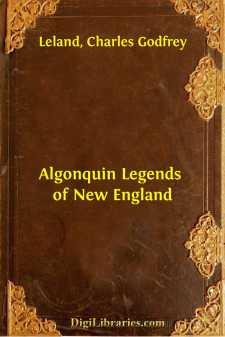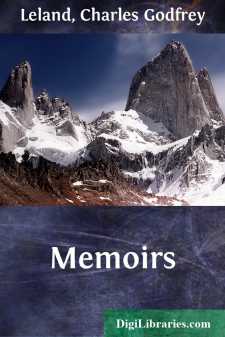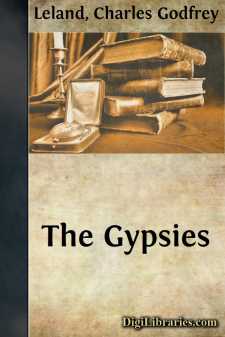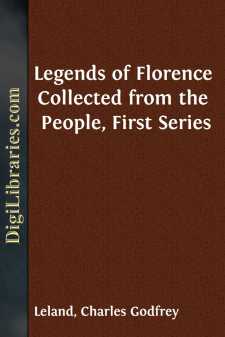Categories
- Antiques & Collectibles 13
- Architecture 36
- Art 48
- Bibles 22
- Biography & Autobiography 813
- Body, Mind & Spirit 142
- Business & Economics 28
- Children's Books 17
- Children's Fiction 14
- Computers 4
- Cooking 94
- Crafts & Hobbies 4
- Drama 346
- Education 46
- Family & Relationships 57
- Fiction 11829
- Games 19
- Gardening 17
- Health & Fitness 34
- History 1377
- House & Home 1
- Humor 147
- Juvenile Fiction 1873
- Juvenile Nonfiction 202
- Language Arts & Disciplines 88
- Law 16
- Literary Collections 686
- Literary Criticism 179
- Mathematics 13
- Medical 41
- Music 40
- Nature 179
- Non-Classifiable 1768
- Performing Arts 7
- Periodicals 1453
- Philosophy 64
- Photography 2
- Poetry 896
- Political Science 203
- Psychology 42
- Reference 154
- Religion 513
- Science 126
- Self-Help 84
- Social Science 81
- Sports & Recreation 34
- Study Aids 3
- Technology & Engineering 59
- Transportation 23
- Travel 463
- True Crime 29
Algonquin Legends of New England
Categories:
Description:
Excerpt
When I began, in the summer of 1882, to collect among the Passamaquoddy Indians at Campobello, New Brunswick, their traditions and folk-lore, I expected to find very little indeed. These Indians, few in number, surrounded by white people, and thoroughly converted to Roman Catholicism, promised but scanty remains of heathenism. What was my amazement, however, at discovering, day by day, that there existed among them, entirely by oral tradition, a far grander mythology than that which has been made known to us by either the Chippewa or Iroquois Hiawatha Legends, and that this was illustrated by an incredible number of tales. I soon ascertained that these were very ancient. The old people declared that they had heard from their progenitors that all of these stories were once sung; that they themselves remembered when many of them were poems. This was fully proved by discovering manifest traces of poetry in many, and finally by receiving a long Micmac tale which had been sung by an Indian. I found that all the relaters of this lore were positive as to the antiquity of the narratives, and distinguished accurately between what was or was not pre-Columbian. In fact, I came in time to the opinion that the original stock of all the Algonquin myths, and perhaps of many more, still existed, not far away in the West, but at our very doors; that is to say, in Maine and New Brunswick. It is at least certain, as the reader may convince himself, that these Wabanaki, or Northeastern Algonquin, legends give, with few exceptions, in full and coherently, many tales which have only reached us in a broken, imperfect form, from other sources.
This work, then, contains a collection of the myths, legends, and folk-lore of the principal Wabanaki, or Northeastern Algonquin, Indians; that is to say, of the Passamaquoddies and Penobscots of Maine, and of the Micmacs of New Brunswick. All of this material was gathered directly from Indian narrators, the greater part by myself, the rest by a few friends; in fact, I can give the name of the aboriginal authority for every tale except one. As my chief object has been simply to collect and preserve valuable material, I have said little of the labors of such critical writers as Brinton, Hale, Trumbull, Powers, Morgan, Bancroft, and the many more who have so ably studied and set forth red Indian ethnology. If I have rarely ventured on their field, it is because I believe that when the Indian shall have passed away there will come far better ethnologists than I am, who will be much more obliged to me for collecting raw material than for cooking it.
Two or three subjects have, it is true, tempted me into occasional commenting. The manifest, I may say the undeniable, affinity between the myths and legends of the Northeastern Indians and those of the Eskimo could hardly be passed over, nor at the same time the identity of the latter and of the Shaman religion with those of the Finns, Laplanders, and Samoyedes. I believe that I have contributed material not devoid of value to those who are interested in the study of the relations of the aborigines of America with the Mongoloid races of the Old World. This is a subject which has been very little studied through the relations of these Wabanaki with the Eskimo.
A far more hazardous venture has been the indicating points of similarity between the myths or tales of the Algonquins and those of the Norsemen, as set forth in the Eddas, the Sagas, and popular tales of Scandinavia. When we, however, remember that the Eskimo once ranged as far south as Massachusetts, that they did not reach Greenland till the fourteenth century, that they had for three centuries intimate relations with Scandinavians, that they were very fond of legends, and that the Wabanaki even now mingle with them, the marvel would be that the Norsemen had not left among them traces of their tales or of their religion. But I do not say that this was positively the case; I simply set forth in this book a great number of curious coincidences, from which others may draw their own conclusions. I confess that I cannot account for these resemblances save by the so-called "historical theory" of direct transmission; but if any one can otherwise explain them I should welcome the solution of what still seems to be, in many respects, a problem.
I am, in fact, of the opinion that what is given in this work confirms what was conjectured by David Crantz, and which is thus expressed in his History of Greenland (London, 1767): "If we read the accounts which have been given of the most northerly American Indians and Asiatic Tartars, we find a pretty great resemblance between their manner of life, morals, usages, and notions and what has been said in this book of the Greenlanders, only with this difference: that the farther the savage nations wandered towards the North, the fewer they retained of their ancient conceptions and customs....







